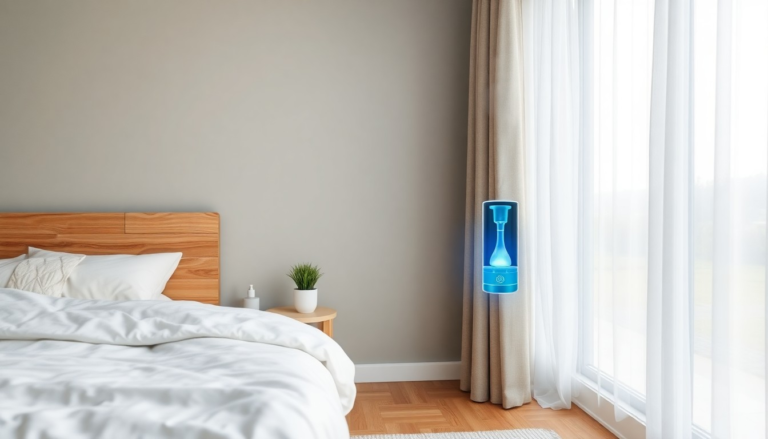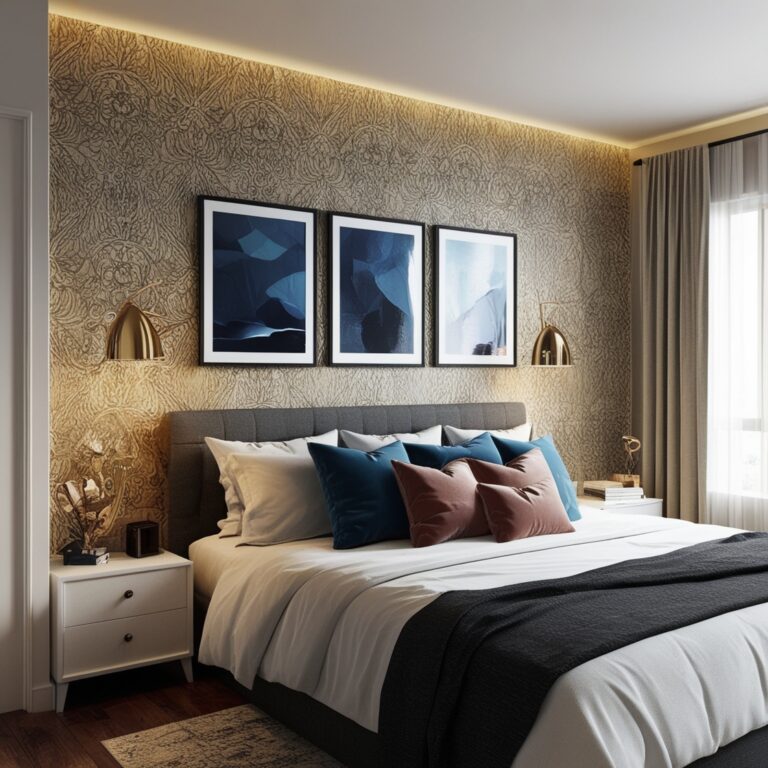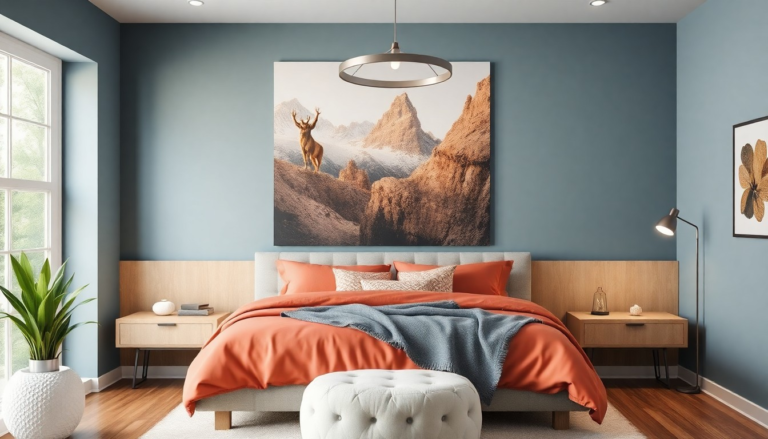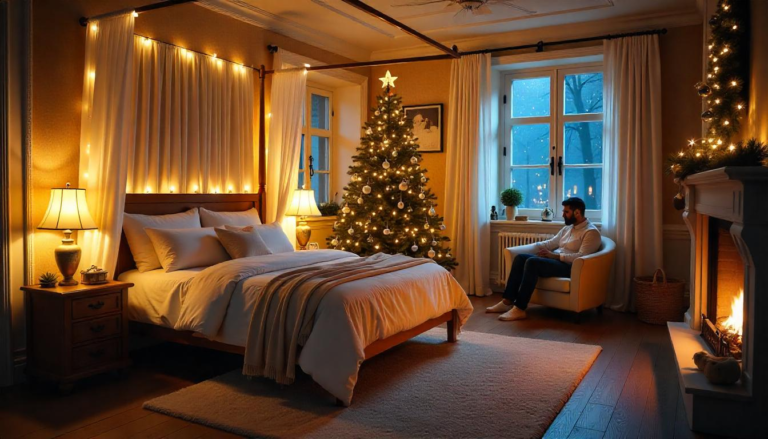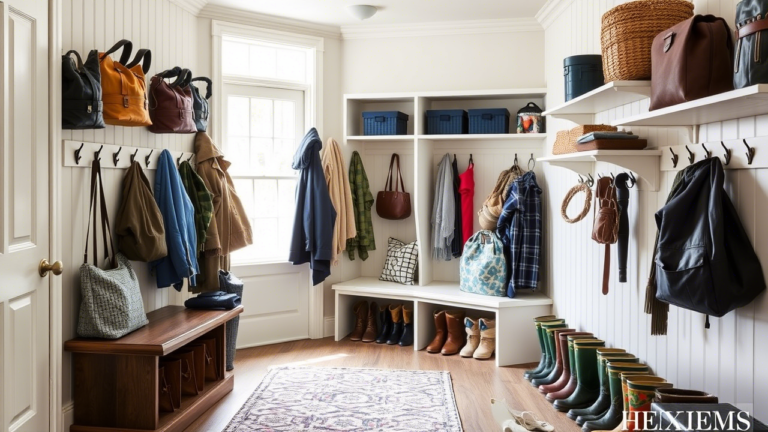Share Bedroom for Kids: 26 Top Stylish and Practical Design Ideas
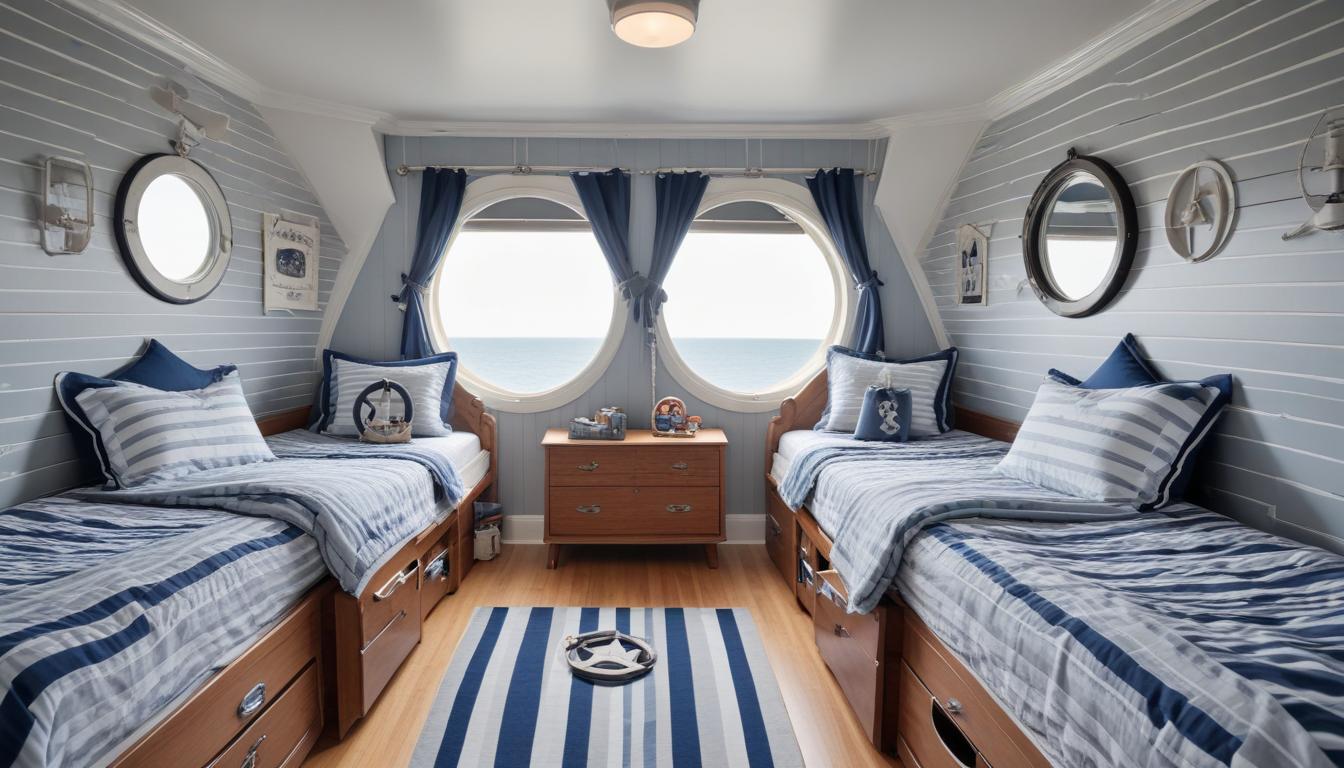
Designing a shared bedroom for kids can feel like solving a tricky puzzle.
You’re trying to fit two (or more) personalities, storage needs, and play spaces into one room—all while keeping it stylish, functional, and peaceful.
Whether you have siblings sharing out of necessity or by choice, a well-designed space can make their room feel like an adventure instead of a battlefield.
Here are 26 stylish and practical design ideas to help you create a space that works for everyone.
1. Use Bunk Beds to Maximize Space
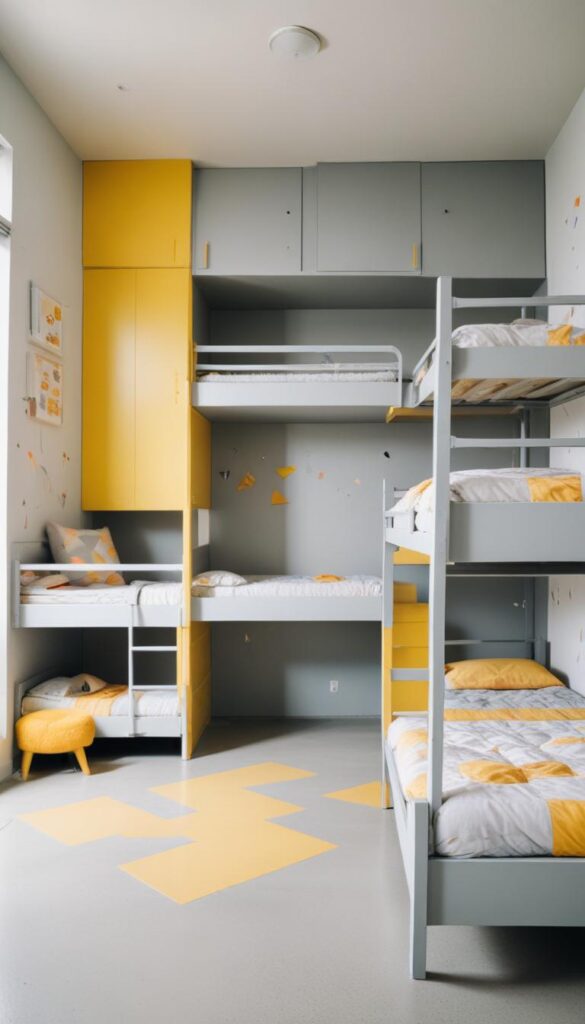
When space is tight, bunk beds are a lifesaver. They free up floor space, making room for play areas, desks, or extra storage.
Plus, they add a fun, fort-like vibe that kids love.
If you’re worried about safety, go for a low bunk bed or one with sturdy rails and steps instead of a ladder.
2. Create Individual Spaces With Curtains or Canopies
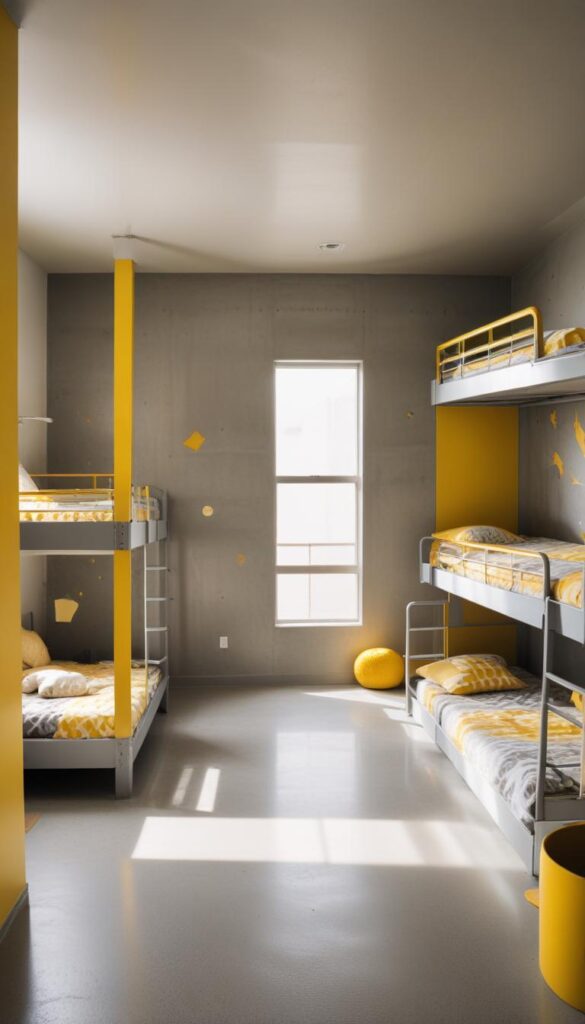
Kids need their own little personal retreat, even in a shared room.
Hanging curtains around bunk beds or using canopies gives them a sense of privacy.
It’s a simple way to let each child have their own cozy hideaway without adding bulky dividers.
3. Go for a Neutral Base With Pops of Color
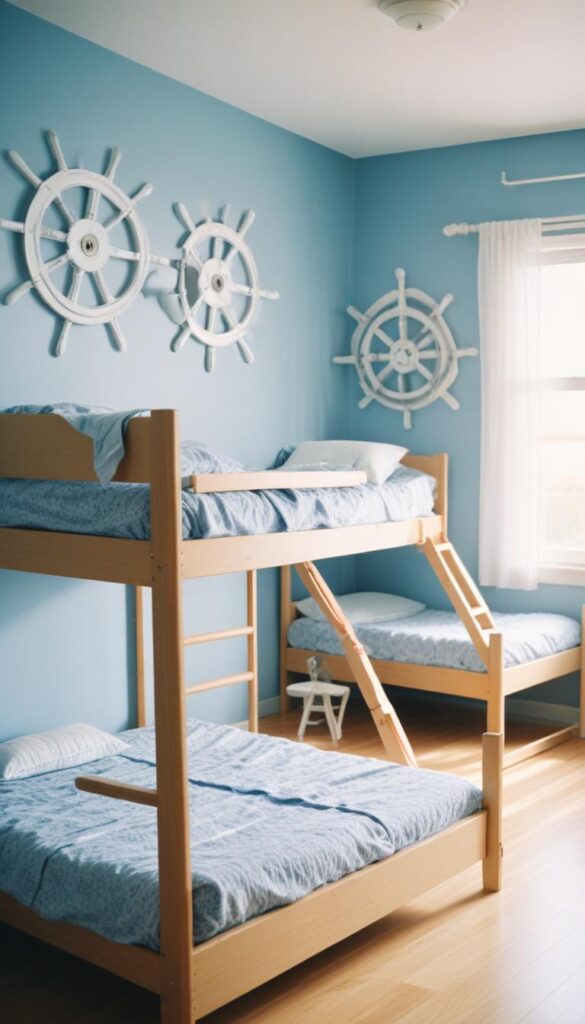
Keeping the walls and furniture neutral (think whites, grays, or light woods) makes the room feel bigger and more cohesive.
Let each child’s personality shine through bedding, wall art, and decor. That way, the room stays stylish, but still feels personal to both kids.
4. Optimize Storage With Built-In Solutions
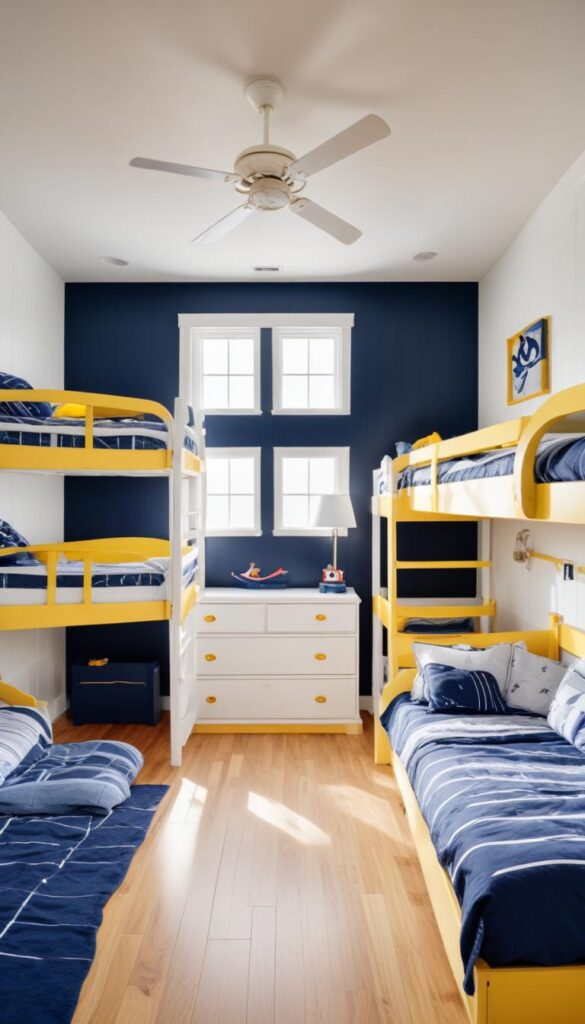
Shared rooms mean double the clothes, books, and toys.
To keep clutter under control, use built-in shelves, under-bed drawers, and vertical storage units.
If space allows, a custom built-in bed with storage underneath can be a game-changer.
5. Choose a Fun Theme That Unites Both Kids
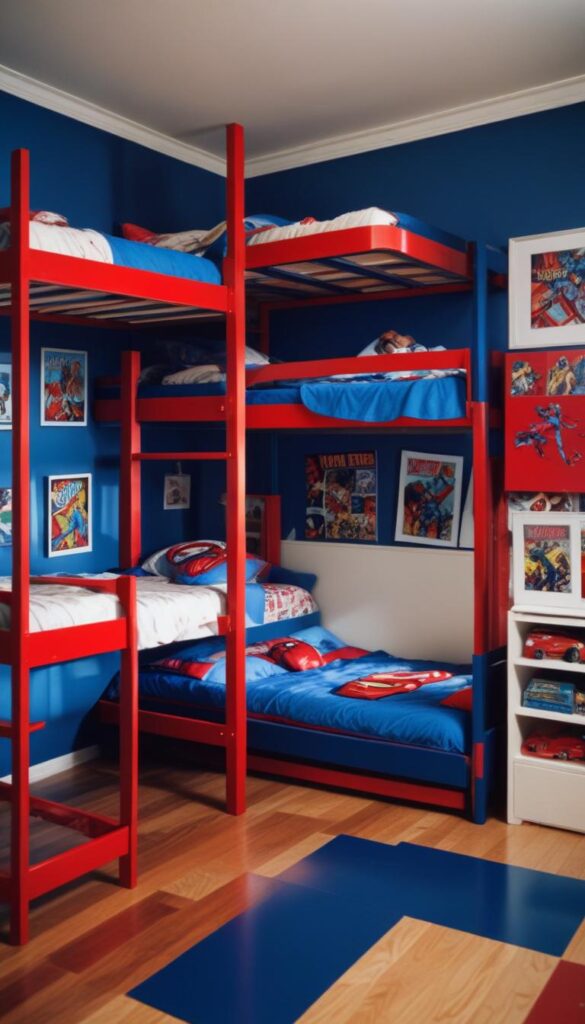
Instead of letting the room feel like two separate worlds mashed together, pick a common theme that both kids love.
Whether it’s a jungle adventure, space exploration, or a cozy cabin, a unified theme makes the room feel intentional and fun.
6. Use Matching But Not Identical Bedding

Coordinating, but not completely identical, bedding helps create a cohesive look while still giving each child a bit of individuality.
Try same patterns in different colors or similar styles with small variations to keep things balanced.
7. Add a Study Nook for Homework Time
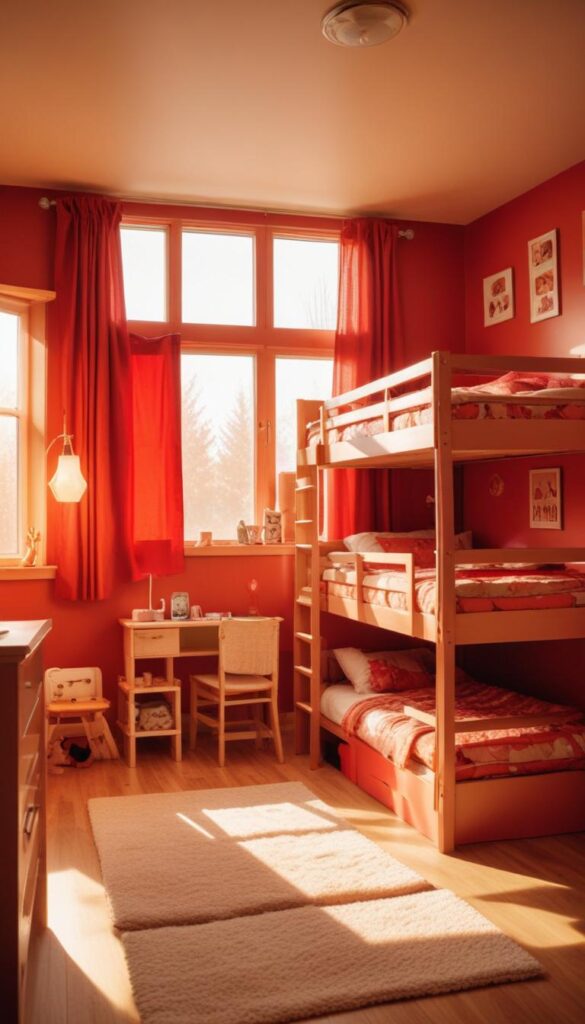
If your kids are school-age, a shared desk or study nook is a must.
A long wall-mounted desk with two chairs can fit neatly into a room without taking up too much space.
Add clip-on lamps and personalized organizers to keep their workspace functional.
8. Make the Most of Vertical Space
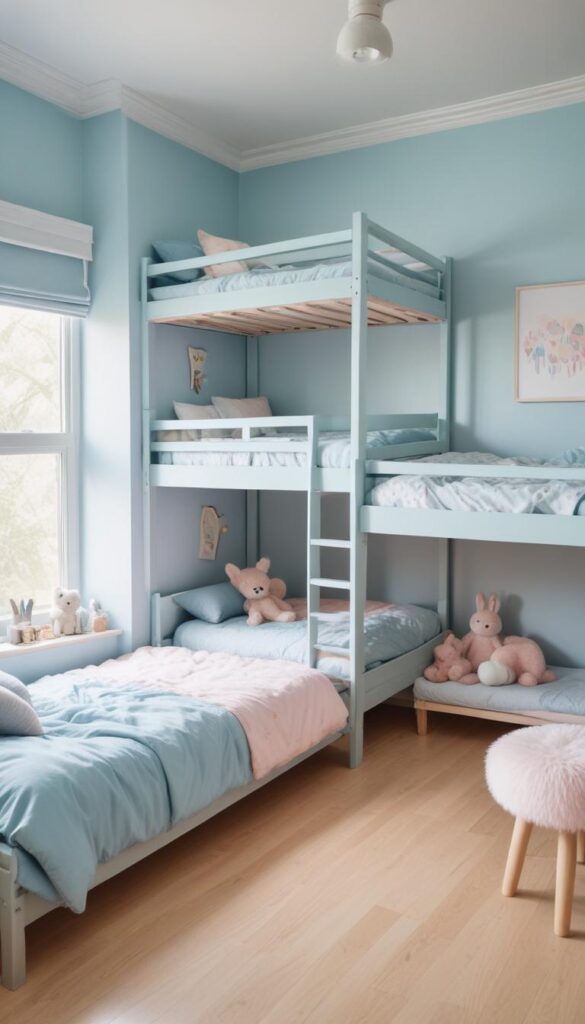
When floor space is limited, look up! Wall-mounted bookshelves, hanging storage baskets, and pegboards can keep essentials off the floor while adding style.
Loft beds are also a great way to double your usable space, with desks or storage underneath.
9. Label Everything for Easy Organization
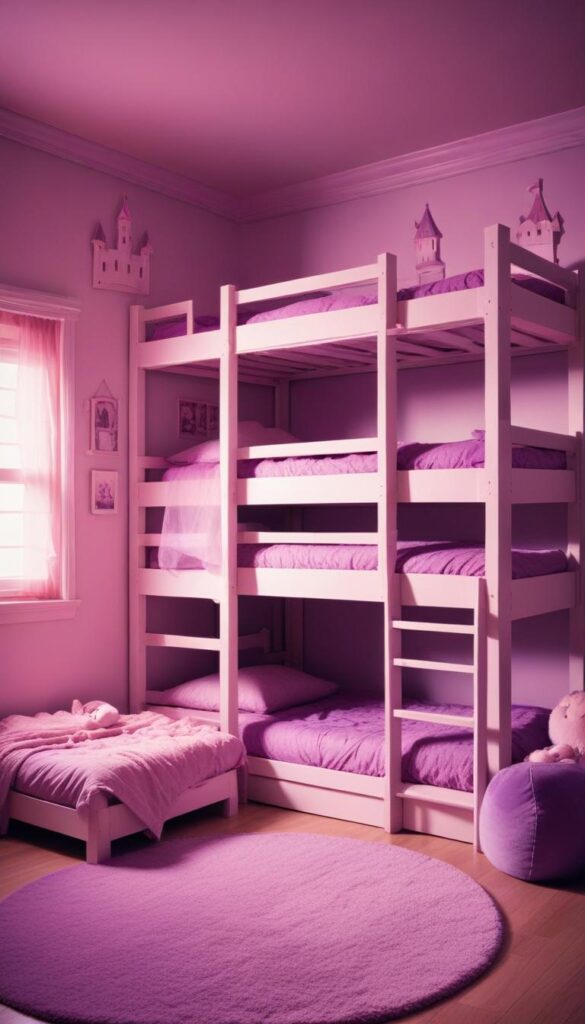
Kids (and parents) benefit from a well-labeled organization system.
Use labels on bins, drawers, and shelves so both kids know where everything goes.
This makes tidying up easier and reduces fights over misplaced items.
10. Give Each Child a Personal Display Area
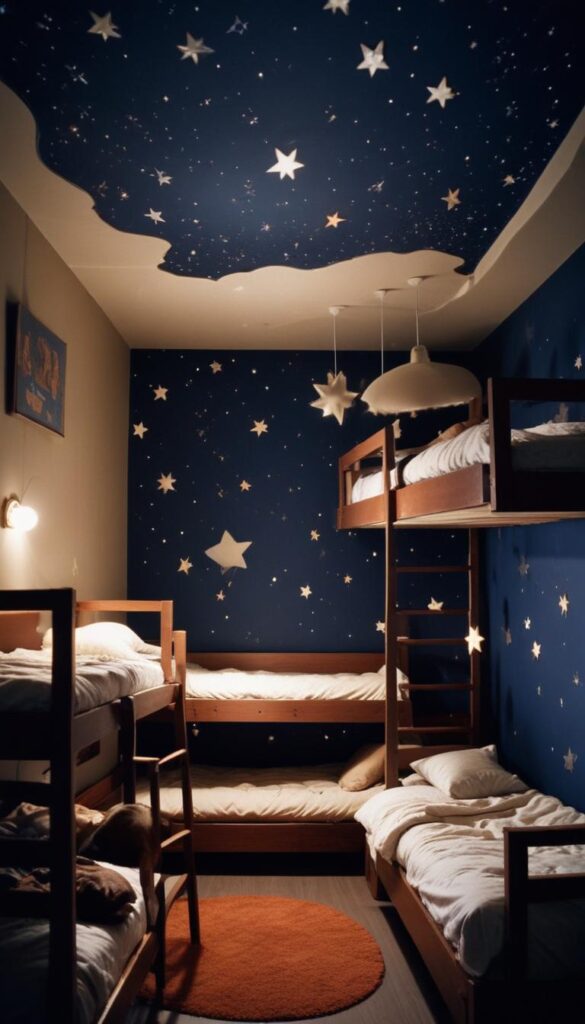
Let each child express themselves with a dedicated display area.
Whether it’s a corkboard, a section of the wall with removable wallpaper, or a photo collage, this gives them a place to showcase their art, photos, and favorite things.
11. Use a Room Divider for More Privacy
If your kids crave separate areas, a low bookshelf, curtain, or folding screen can subtly divide the space while still keeping it open.
This is especially useful for older kids who need a bit more independence.
12. Incorporate Play Areas Without Clutter
Shared bedrooms should be functional but fun.
A small teepee, climbing wall, or loft play area keeps kids entertained while making the room feel exciting.
If space is tight, a fold-down activity table can serve as a play zone when needed.
13. Opt for a Trundle Bed for Sleepovers
If bunk beds aren’t an option, a trundle bed offers an easy sleepover solution.
It stays neatly tucked away when not in use but is ready whenever friends or cousins stay the night.
14. Create Color Zones for Each Child
If your kids have wildly different tastes, assign each one a color zone within the room.
They can each pick their own bedding, decor, and small accents within their chosen color scheme, so both personalities shine.
15. Keep Floors Open With Wall-Mounted Storage
Big toy bins take up valuable space. Instead, try wall-mounted cubbies, hanging organizers, or slim bookshelves to keep things neat while leaving floor space open for play.
16. Add a Growth Chart for a Sentimental Touch
A growth chart is a sweet way to track your kids’ milestones in a shared room.
Use a peel-and-stick height chart or mark their heights on a dedicated wall panel to watch them grow together.
17. Install Personalized Hooks for Backpacks & Coats
Avoid the morning chaos of misplaced backpacks and jackets by giving each child a designated hook near the door.
Bonus points if you label them with their names or initials!
18. Use Stackable Bins for Easy Toy Storage
Stackable bins keep toys organized, accessible, and easy to clean up.
Use clear bins for younger kids so they can see what’s inside, or colored bins for a more streamlined look.
19. Include Soft Lighting for a Cozy Feel
Overhead lights can feel harsh, especially at bedtime.
Soft bedside lamps, string lights, or wall-mounted sconces make the room feel warm and inviting while giving each child control over their own light source.
20. Incorporate a Shared Chalkboard or Whiteboard
A large chalkboard or whiteboard wall encourages creativity and teamwork.
Kids can use it for doodles, reminders, or even messages to each other.
21. Design a Closet System That Works for Two
Double the kids means double the clothes.
Use a closet system with divided sections, labeled bins, and adjustable rods to keep everything organized.
A second clothing rod at kid-friendly height makes it easier for little ones to reach their clothes.
22. Make Room for a Cozy Reading Corner
Encourage a love of books by adding a small reading nook with floor cushions, bookshelves, and a soft rug.
It’s a great way to create a calming retreat within the shared space.
23. Let Kids Have a Say in the Decor
Getting kids involved in the design process makes them more excited about their space.
Let them choose wall art, a favorite pillow, or small decor items so they feel ownership over their room.
24. Use a Loft Bed for More Floor Space
If your ceiling height allows, a loft bed with a study or play area underneath is an amazing space-saver.
It creates a dedicated spot for homework or quiet activities while keeping the room open.
25. Keep It Adaptable for Growing Kids
Kids’ interests change fast, so design the room with adaptability in mind.
Choose furniture that can grow with them, like convertible cribs, adjustable shelving, or modular desks.
26. Add a Fun Element Like a Swing or Hammock
If space allows, a hanging chair, indoor swing, or hammock adds an unexpected, fun feature to the room.
It’s a great spot for reading, relaxing, or just hanging out.
Final Thoughts
A shared bedroom for kids doesn’t have to be a challenge—it can be an opportunity to create a fun, functional, and stylish space where siblings can bond and thrive.
By using smart storage, personalized touches, and a bit of creativity, you can design a room that makes both kids (and parents) happy.
Which of these ideas will you try first? Let me know how you’re planning to transform your kids’ shared space!

